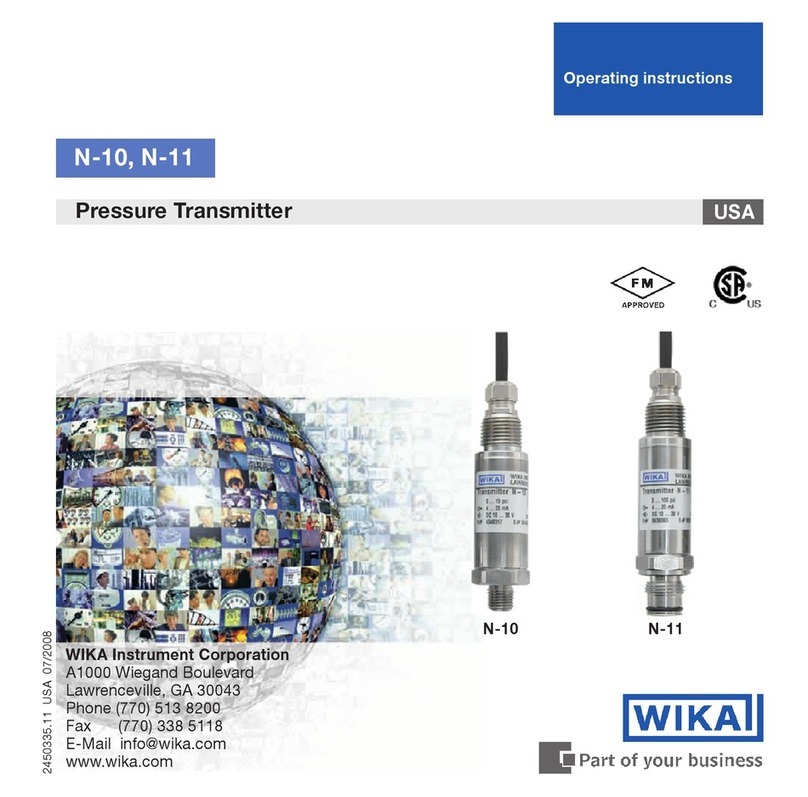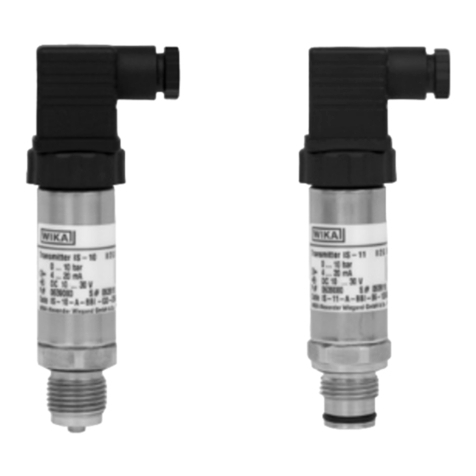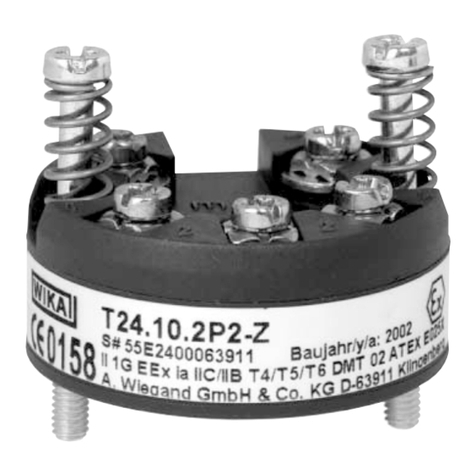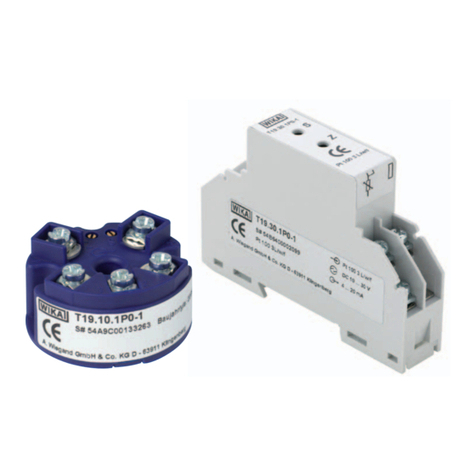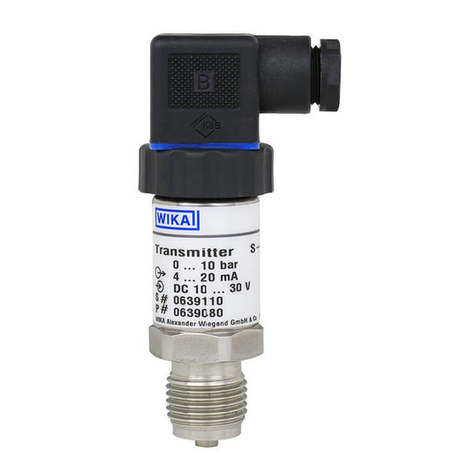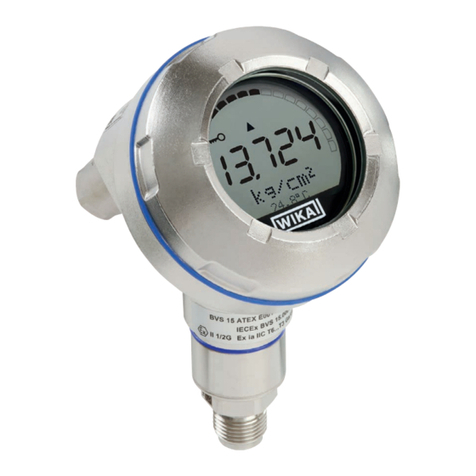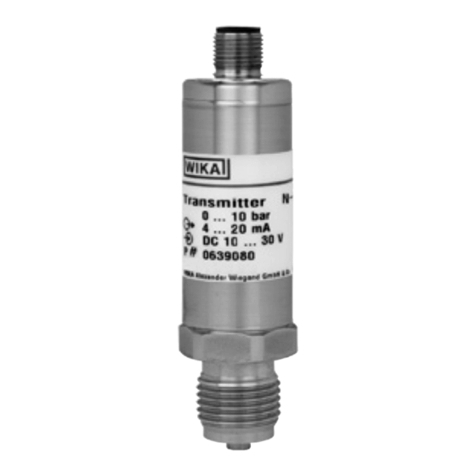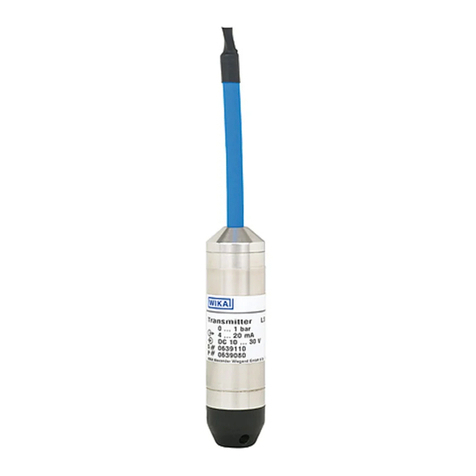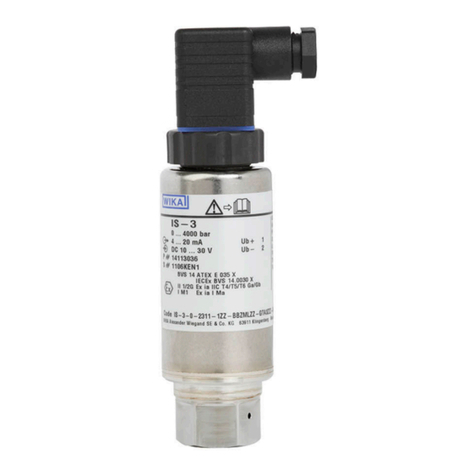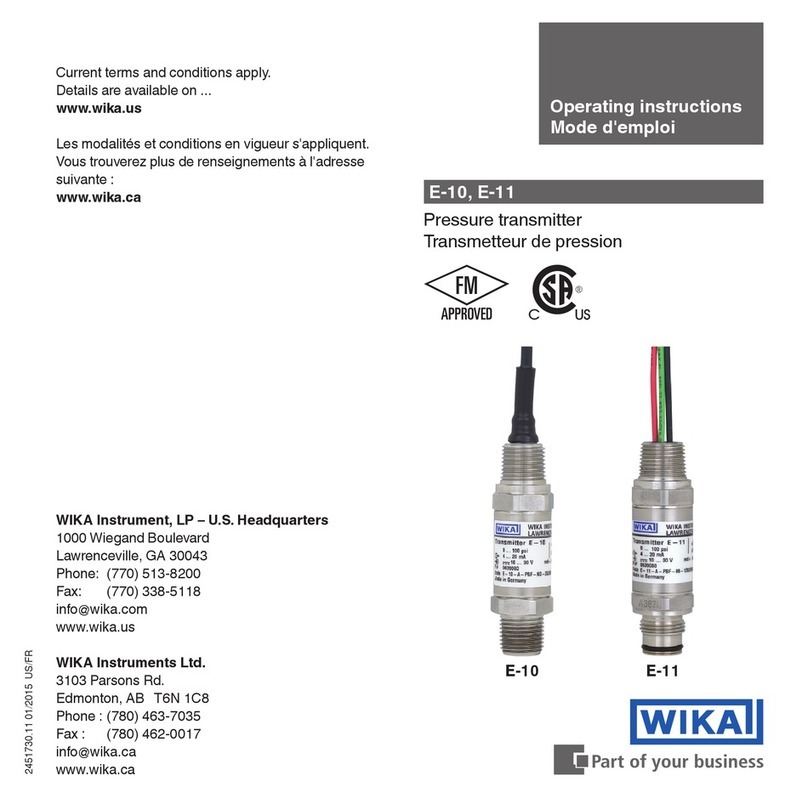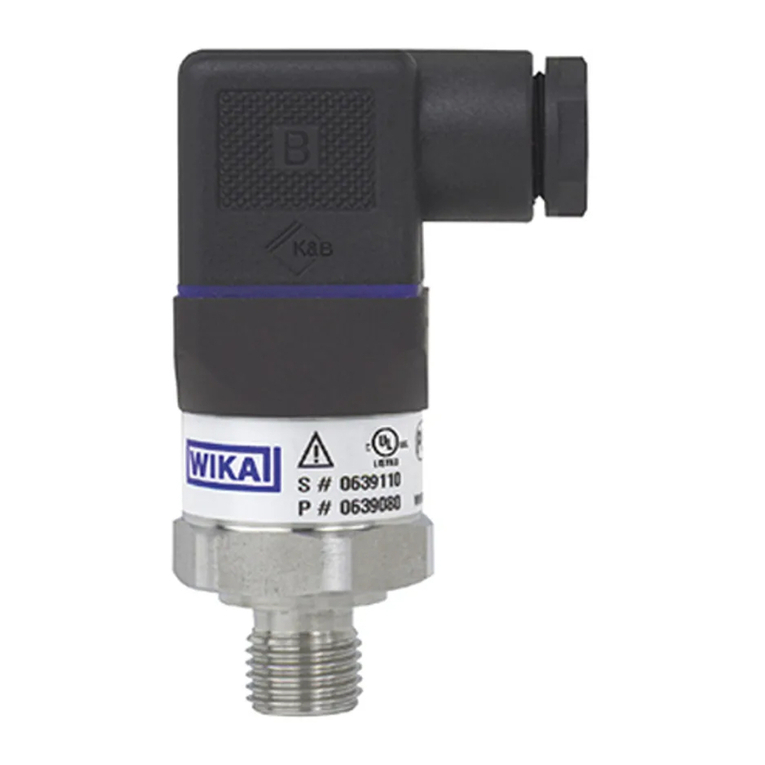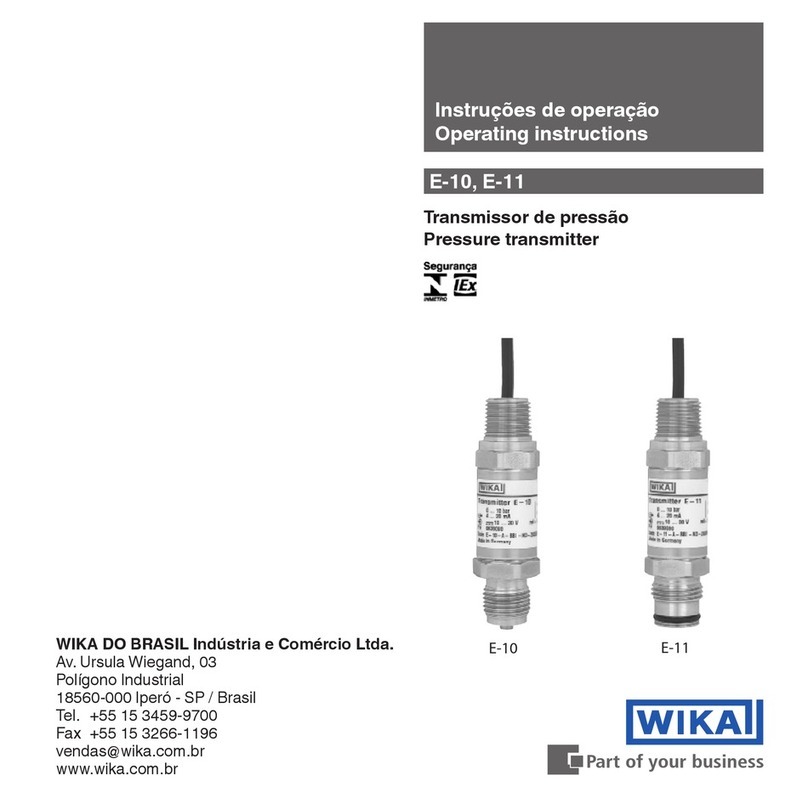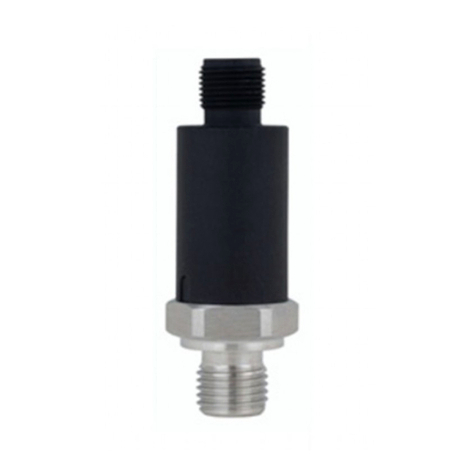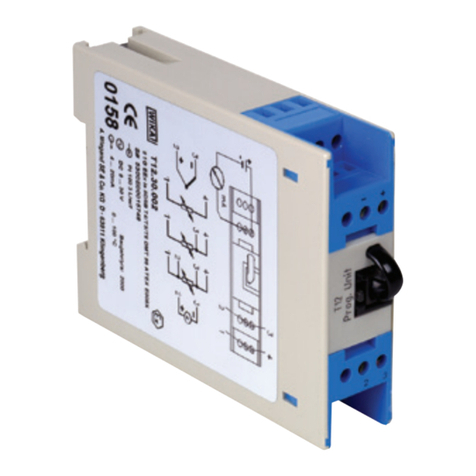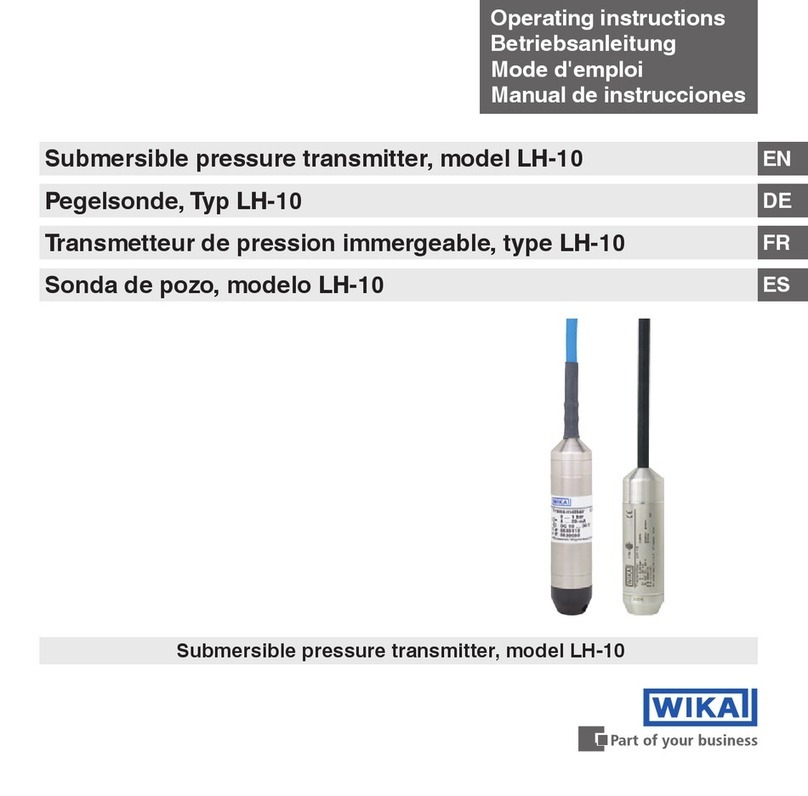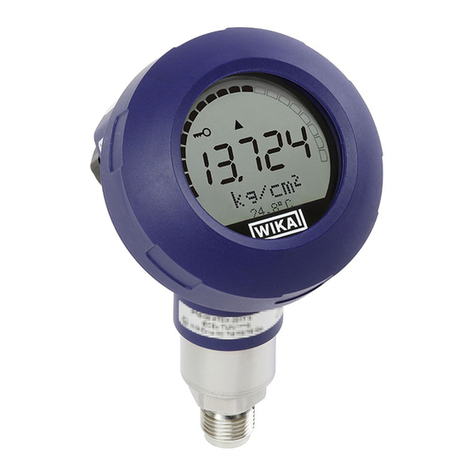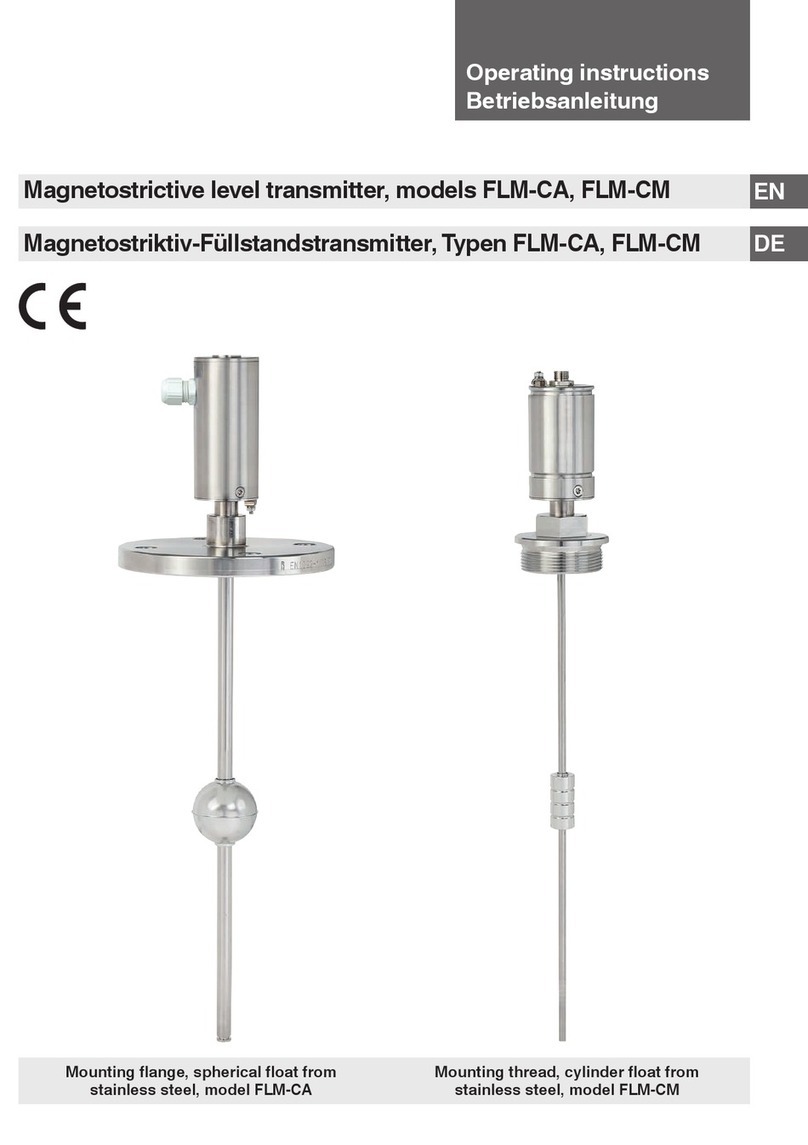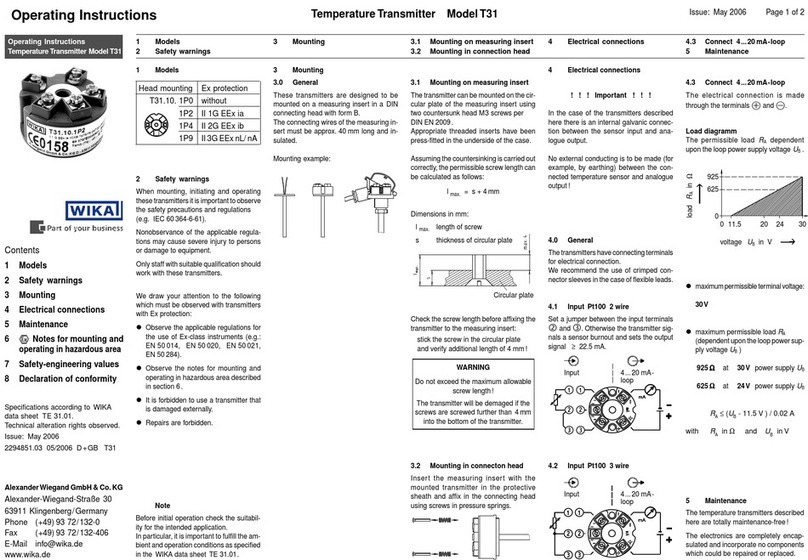
11116552.09 EN/DE 05/2016
8WIKA Operating instructions, E-10, E-11
EN
4. For your safety
WARNING
■
Select the appropriate pressure transmitter with regard to scale range, perfor-
mance and specic measurement conditions prior to installing and starting the
instrument.
■
Observe the relevant national regulations and observe the applicable
standards and directives for special applications (e.g. with dangerous media
such as acetylene, ammable gases or liquids and toxic gases or liquids and
with refrigeration plants or compressors). If you do not observe the appropriate
regulations, serious injuries and/or damage can occur!
■
Open pressure connections only after the system is without pressure!
■
Please make sure that the pressure transmitter is only used within the overload
threshold limit all the time!
■
Observe the ambient and working conditions outlined in section 6 table „Speci-
cations”.
■
Ensure that the pressure transmitter is only operated in accordance with the
provisions i.e. as described in the instructions.
■
Do not interfere with or change the pressure transmitter in any other way than
described in these operating instructions.
■
Remove the pressure transmitter from service and mark it to prevent it from
being used again accidentally, if it becomes damaged or unsafe for operation.
■
Take precautions with regard to remaining media in removed pressure transmit-
ter. Remaining media in the pressure port may be hazardous or toxic!
■
Have repairs performed by the manufacturer only.
4. For your safety







